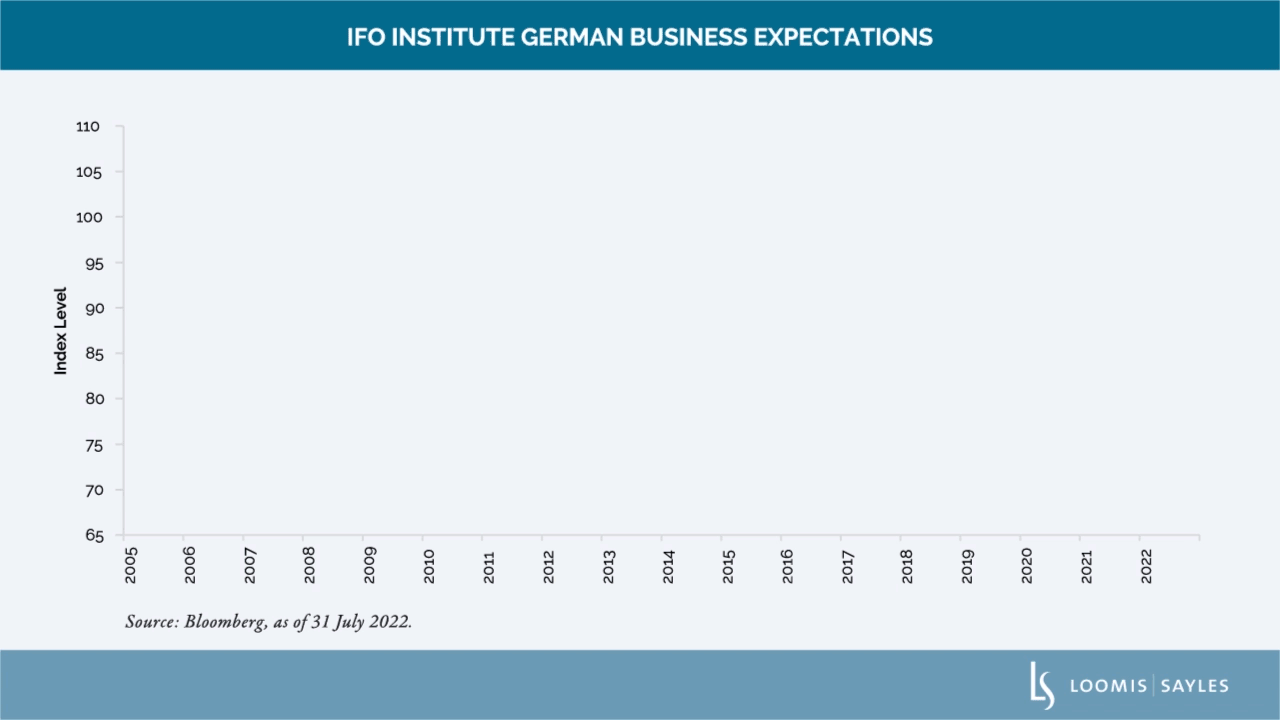So many critical economic and market developments this year can be traced back in one way or another to the Russian invasion of Ukraine. The process started with a commodity price shock, which led to an interest rate shock. The combination of higher commodity prices and higher interest rates resulted in a growth shock. Most major economies were hurt by these developments, but it appears Europe has found itself at the epicenter of the consequences:
- Many European countries are critically dependent on Russian energy imports, leaving them vulnerable to a cutoff in supply. This has caused energy prices to surge more dramatically in Europe than elsewhere, raising European headline inflation metrics and forcing the European Central Bank (ECB) to become more hawkish. In fact, in July the ECB delivered its first rate hike in more than a decade despite an unambiguously weak growth outlook.
- With consumer and business confidence dropping, recession has become more likely in Europe. On top of this, European industry is now under threat of gas rationing later this year, which would likely exacerbate any slowdown. Sentiment has become so bad that the German manufacturing model is being called into question due to its reliance on cheap Russian energy imports for power.

- Perhaps most emblematic of Europe’s woes, in our view, has been the performance of its common currency, the euro. The US Federal Reserve has been aggressively hiking interest rates to deal with its own inflation problem. Meanwhile, the ECB has been constrained in how far it can raise its policy rate due to the recessionary outlook in Europe. This combination has driven a wedge between US and European short-term interest rates and put downward pressure on the euro. In July, the euro/US Dollar exchange rate touched parity for the first time in 20 years, a major surprise for 2022.
A cautious approach to Europe, for now
As we look ahead, these developments make us more cautious about investing in Europe, at least for now. Until we see evidence of some form of détente in Ukraine or easing of economic sanctions against Russia, the bar will be high for us to consider deploying capital on the European continent and we would seek significant excess risk premium. Even though the war in Ukraine has faded from the headlines somewhat in recent weeks and months, we still believe it is an area of critical importance and one we will be watching very closely for signs of improvement.

MALR029479
Past market experience is no guarantee of future results.
Commodity, interest and derivative trading involves substantial risk of loss. This is not an offer of, or a solicitation of an offer for, any investment strategy or product. Any investment that has the possibility for profits also has the possibility of losses, including the loss of principal.
Market conditions are extremely fluid and change frequently.
This blog post is provided for informational purposes only and should not be construed as investment advice. Any opinions or forecasts contained herein reflect the
subjective judgments and assumptions of the authors only and do not necessarily reflect the views of Loomis, Sayles & Company, L.P. Information, including
that obtained from outside sources, is believed to be correct, but Loomis Sayles cannot guarantee its accuracy. This material cannot be copied, reproduced or
redistributed without authorization. This information is subject to change at any time without notice.





